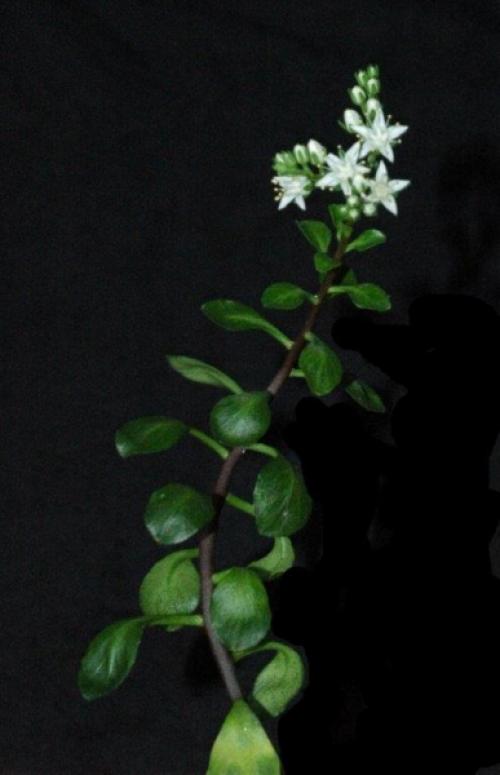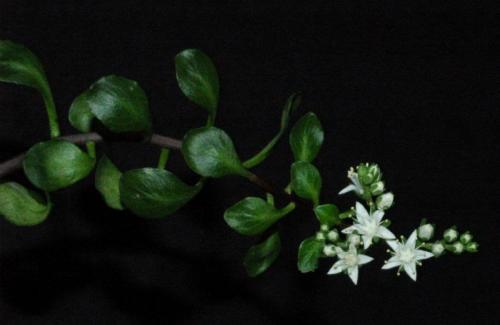SALAZARII Reyes & González-Zorzano, 2011
Distribution : Mexico (Guerrero), growing in shallow accumulations of soil in crevices of large boulders along a permanent stream in semi-deciduous tropical forest.
Description (according to the publication in Cactus and Succulent Journal, US, 83(5) : 236-239. 2011) :
Lithophytic, perennial herbs branching from the base, erect, up to 30 cm long.
Roots tuberous.
Stems 1 - 4 per plant, dark wine red, finely papillose, 3.5 - 6 mm in diameter, abscissing at base upon wiltling.
Leaves glabrous green, sessile, spatulate, margin entire, apex retuse, veins evident as a reticule, 23 - 40 mm x 10 - 17 mm, 0.6 mm thick.
Inflorescences : 1 one per branch, 3 - 6 cm long, paniculate, with 24 - 40 flowers, bracts spatulate, pedicels 2.4 - 3 mm long.
Flowers : Sepals equal, adpressed and ascendant, green, linear-lanceolate, 3 mm long, 1mm wide, corolla 9.5 mm long, petals white, channeled, spreading or ascending, lanceolate, apex slightly apiculate and greenish.
Flowering time : October, November.
Note :
Sedum salazarii shares some morphological features with annual or bi-annual plants of the S. jaliscanum group, such as tuberous roots, spatulate leaves and white flowers. It is likely that S. salazarii is most closely related to S. tortuosum with which it shares features like the inflorescence, size and colour of the flowers, and distribution in the Sierra Madre Occidental and Sierra Madre del Sur. However, they differ in the roots, size and habit. S. salazarii is a lithophytic plant with deciduous stems, with only the roots remaining after flowering whereas in S. tortuosum the stems are persistent, losing only the spatulate, thick leaves that lack evident veining.


Photos Ray Stephenson